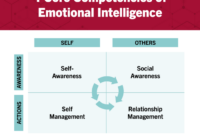Business intelligence reports are the cornerstone of informed decision-making, providing businesses with the insights they need to navigate complex markets and achieve success. Dive into the world of business intelligence and discover how these reports can empower your organization with actionable data.
Definition of Business Intelligence Report
Business intelligence (BI) is the process of collecting, analyzing, and presenting data to help businesses make better decisions. A business intelligence report is a document that summarizes the findings of a BI analysis.
These reports can provide valuable insights into a company’s performance, customers, and market trends.
Analyzing data to make informed decisions is crucial for business success. A business intelligence report provides insights into key performance indicators, customer behavior, and market trends. To enhance your expertise in this field, consider obtaining a business intelligence certificate.
This credential validates your skills and knowledge, enabling you to create comprehensive reports that drive business growth.
BI reports can be used for a variety of purposes, such as:
- Identifying opportunities for growth
- Improving customer satisfaction
- Reducing costs
- Making better decisions
Key Components of a Business Intelligence Report

The key components of a BI report include:
- Executive Summary: A brief overview of the report’s findings and recommendations.
- Data Analysis: A detailed analysis of the data that was used to create the report.
- Recommendations: A list of actions that the company can take to improve its performance.
Data Sources and Collection Methods

The data used in BI reports can come from a variety of sources, including:
- Internal data sources: Data that is collected from within the company, such as sales data, customer data, and financial data.
- External data sources: Data that is collected from outside the company, such as market research data, industry data, and economic data.
Data collection methods can include:
- Surveys: Collecting data from customers or employees through surveys.
- Interviews: Conducting interviews with customers, employees, or industry experts.
- Data mining: Extracting data from large datasets using data mining techniques.
Data Analysis Techniques

The data analysis techniques used in BI reports can include:
- Descriptive statistics: Summarizing the data using descriptive statistics, such as mean, median, and mode.
- Inferential statistics: Making inferences about the population from a sample using inferential statistics, such as hypothesis testing and regression analysis.
- Predictive analytics: Using data to predict future events, such as customer churn and sales forecasts.
Visualizing Data
Data visualization is an important part of BI reporting. Visualizations can help to make the data more accessible and easier to understand. Some common data visualization techniques include:
- Charts and graphs: Using charts and graphs to display data in a visual way.
- Maps: Using maps to display data geographically.
- Dashboards: Using dashboards to provide a visual overview of key performance indicators (KPIs).
Writing and Presenting a Business Intelligence Report
When writing a BI report, it is important to be clear and concise. The report should be easy to read and understand, even for non-technical audiences. It is also important to use visuals to help make the data more accessible.
When presenting a BI report, it is important to be prepared to answer questions from stakeholders. It is also important to be able to explain the findings of the report in a way that is easy to understand.
Final Thoughts
Unlocking the power of data through business intelligence reports is essential for businesses seeking to stay competitive in today’s dynamic environment. By embracing data-driven decision-making, organizations can gain a competitive edge, optimize operations, and drive growth.
Detailed FAQs: Business Intelligence Report
What is a business intelligence report?
A business intelligence report is a comprehensive analysis of data that provides insights into a company’s performance, market trends, and customer behavior.
To generate valuable insights, business intelligence reports rely heavily on data. A business intelligence data warehouse centralizes and stores data from various sources, making it accessible for analysis. This allows businesses to extract meaningful patterns and trends from their data, enabling them to make informed decisions that drive growth and success.
What are the key components of a business intelligence report?
Executive summary, data analysis, recommendations
How can business intelligence reports benefit my business?
Business intelligence reports are essential for businesses to make informed decisions. They provide insights into key metrics, trends, and patterns. If you’re interested in a career in business intelligence, you’ll need to develop strong analytical skills and a deep understanding of data analysis techniques.
Learn how to become a business intelligence analyst to gain the skills needed to create impactful business intelligence reports that drive business success.
Improved decision-making, increased efficiency, competitive advantage




